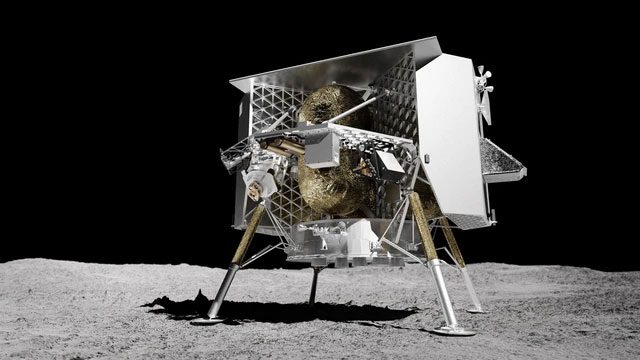The crash of the Peregrine spacecraft into Earth, after a failed lunar landing, is expected to cause it to burn up completely in the atmosphere.
According to Astrobotic, the private company that built the Peregrine lander, this lunar lander began its descent towards Earth on January 13, following a fuel leak incident that caused it to gradually “die.”

Graphic depicting the Peregrine lunar lander – (Image: NASA)
The Peregrine lander had high expectations placed upon it. If it had successfully landed in February this year as planned, this spacecraft would have marked the return of the United States to the Moon’s surface after more than half a century, as well as become the first privately funded lander to reach this celestial body.
Peregrine was also carrying five research packages from NASA to the Moon, along with research packages and cargo from several other countries, including the ashes of an individual. The inclusion of these ashes sparked a wave of controversy.
According to Space.com, the incident began just six hours after launch when the lander successfully separated from its rocket. After attempting to find a solution, Astrobotic was forced to admit that the spacecraft would never reach the Moon.
On January 13, the company announced that the lander was on its way back to Earth but was still trying to make some adjustments.
However, after consulting with NASA and the U.S. government, Astrobotic decided to allow the spacecraft to “self-destruct” in Earth’s atmosphere.
In addition to the latest simple announcement about the timeline, Peregrine is expected to enter the upper atmosphere of Earth on January 18, but the company did not provide details about the specific location or time it is expected to crash into the atmosphere.
According to Eastern Standard Time in the U.S., January 18 in the country will correspond to the time from 12 PM on January 18 to 12 PM on January 19 in Vietnam.
This decision to crash into the atmosphere is aimed at preventing space debris from being left in Earth’s surrounding space.
Indeed, the risk from space debris is increasing. In addition to NASA, many other space agencies, including the European Space Agency (ESA) and Roscosmos (the Russian space agency), have been considering options to reduce this space debris.
Debris is believed to be the cause of malfunctions in three Russian spacecraft from late 2022 to 2023, as well as necessitating multiple relocations of the International Space Station (ISS) to avoid incoming debris.


















































